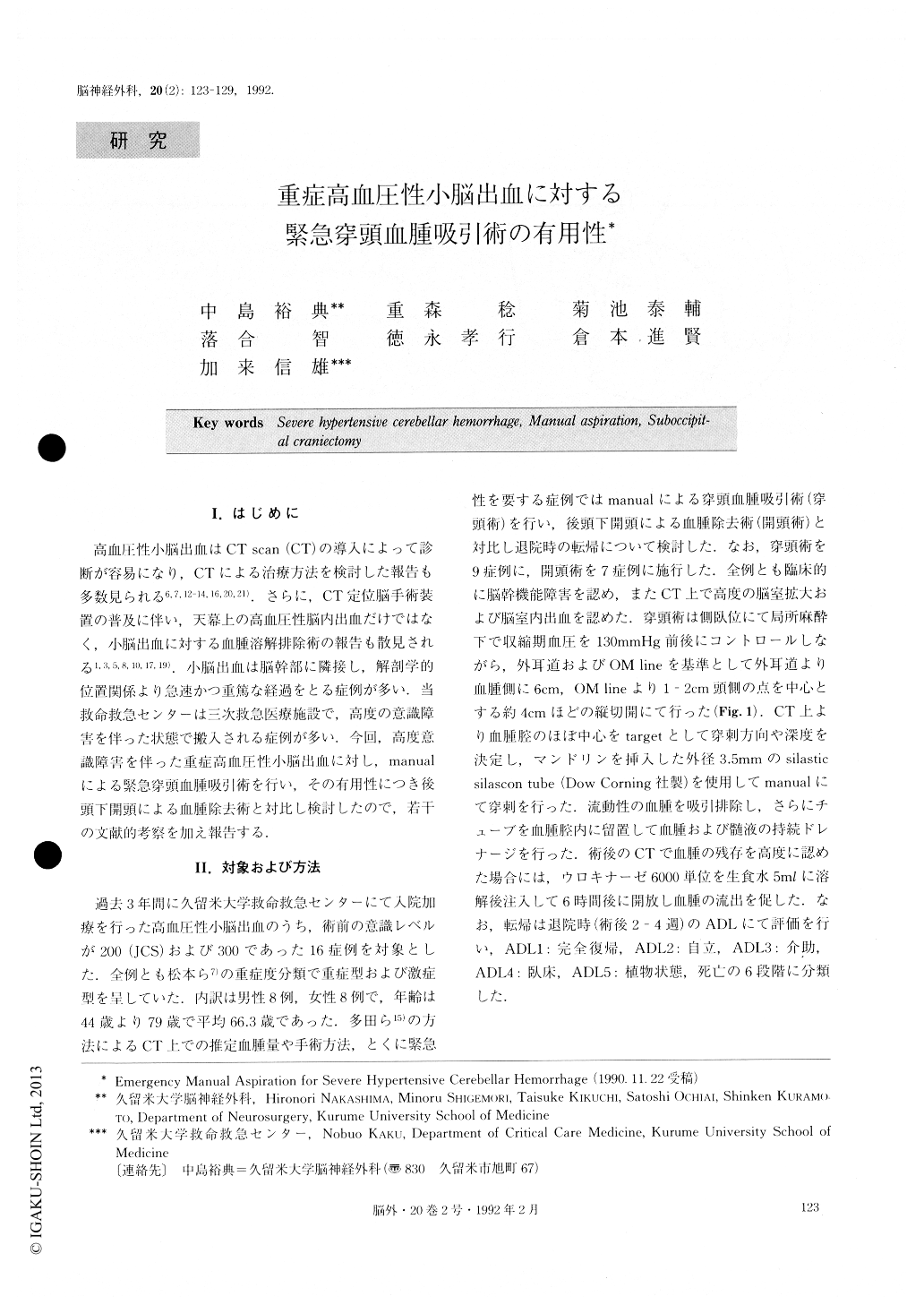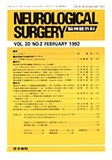Japanese
English
- 有料閲覧
- Abstract 文献概要
- 1ページ目 Look Inside
I.はじめに
高血圧性小脳出血はCT scan(CT)の導入によって診断が容易になり,CTによる治療方法を検討した報告も多数見られる6,7,12-14,16,20,21).さらに,CT定位脳手術装置の普及に伴い,天幕上の高血圧性脳内出血だけではなく,小脳出血に対する血腫溶解排除術の報告も散見される1,3,5,8,10,17,19).小脳出血は脳幹部に隣接し,解剖学的位置関係より急速かつ重篤な経過をとる症例が多い.当救命救急センターは三次救急医療施設で,高度の意識障害を伴った状態で搬入される症例が多い.今回,高度意識障害を伴った重症高血圧性小脳出血に対し,manualによる緊急穿頭血腫吸引術を行い,その有用性につき後頭下開頭による血腫除去術と対比し検討したので,若干の文献的考察を加え報告する.
We treated 16 patients with hypertensive cerebellar hemorrhage and coma, or deep coma. Their ages ranged from 44 to 79 years (mean age: 66.3 years). Manual aspiration was performed in 9 patients and sub-occipital craniectomy was performed in 7 patients. The difference in outcome between the manual aspiration group and the suboccipital craniectomy group with se-vere hypertensive cerebellar hemorrhage was then ev-aluated. Manual aspiration was performed for 4 patients in coma, and 5 in deep coma, with a mean age of 69.0years. The average size of the hematoma was 48.7mm and the mean volume was 31. 7ml on CT scan. The mean interval from admission to operation was about 60 minutes. The mean aspiration rate was 79.6% and 7 patients (77.8%) had a good response to drainage. The suboccipital craniectomy patients included 5 in coma, and 2 in deep coma, with a mean age of 63.4 years. The average size of the hematoma was 51.1 mm and the mean volume was 33.1 ml on CT scan. The mean interval from admission to operation was about 112 mi-nutes and the mean evacuation rate was 86.4%. The re-sults were as follows:1) After manual aspiration, 5 patients (55.6%) had a good outcome and 2 patients (40%) with deep coma showed good recovery.
In contrast, after suboccipital craniectomy only 2 pa-tients (28.6%) had a good outcome and all of the deep coma patients showed poor recovery.2) The outcome may be most strongly influenced by the duration from admission to operation.
3) All patients with a hematoma volume of over 30 ml had a poor outcome.
4) Emergency manual aspiration is quite an effective mode of therapy for severe hypertensive cerebellar hemorrhage because it is simple, safe, rapid, repeatable and provides sufficient aspiration of the hematoma to produce good decompression.

Copyright © 1992, Igaku-Shoin Ltd. All rights reserved.


